
Contact
A collection of images of classic Vauxhall cars, and cars that are likely to become classics, taken at numerous visits to car shows, motoring museums, motoring events and on the road when the opportunity arises.
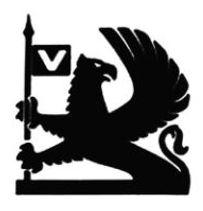
Vauxhall Motors Limited is a British car company headquartered in Chalton, Bedfordshire, England. Vauxhall became a subsidiary of Stellantis in January 2021.
Vauxhall is one of the oldest established vehicle manufacturers and distribution companies in the United Kingdom. It sells passenger cars, and electric and light commercial vehicles under the Vauxhall marque nationally, and used to sell vans, buses, and trucks under the Bedford brand, which was established in 1930.
Vauxhall was founded by Alexander Wilson in 1857 as a pump and marine engine manufacturer. It was purchased by Andrew Betts Brown in 1863, who began producing travelling cranes under the company, renaming it "Vauxhall Iron Works". The company began manufacturing cars in 1903, and changed its name back around this time. It was acquired by American automaker General Motors (GM) in 1925.
1900

Vehicle first registered on 1st December 1903.
650cc petrol engine.
The notice displayed with the vehicle states:
The second oldest Vauxhall.
Although this is the forty-fifth car to have been built by Vauxhall Ironworks in 1903, it is the second oldest surviving Vauxhall and the company's oldest surviving four-seater. It was bought brand new by a shipbuilder from Leven, Dunbartonshire in Scotland for £154 3s 3d.
On this model, the passengers sit in front of the driver, over the engine. The body of the car is a composite wood and steel structure, combining the chassis and the lower section of the body, similar to marine bodies. This is perhaps due to the designers F.W. Hodges and J.H. Chambers' marine engineering background.
The car has a single cylinder engine and a tiller steering system, with an engine speed regulating control on the tiller. Wheel steering was not introduced on Vauxhall models until after 1904 and, at the same time, the wire wheels were changed for artillery ones for improved structural integrity and easier maintenance. The 5hp features a chain driven transmission to the rear axle and a two-speed epicyclic gearbox but with no reverse gear.
this particular car was acquired for the Vauxhall Heritage Collection in 1995 and has been an entrant into the London to Brighton Veteran Car Run.
Engine: 1cyl. 978cc. Top speed: 20mph (32km/h). Power: 5bhp. Coachwork: Tourer. Price new: £154. Registration mark: BS 8213.
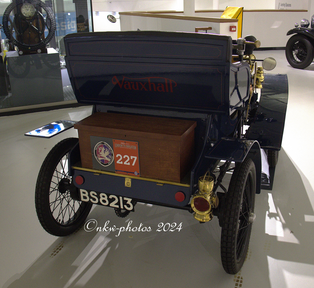
Vehicle first registered on 1st December 1903.
650cc petrol engine.
The notice displayed with the vehicle states:
The second oldest Vauxhall.
Although this is the forty-fifth car to have been built by Vauxhall Ironworks in 1903, it is the second oldest surviving Vauxhall and the company's oldest surviving four-seater. It was bought brand new by a shipbuilder from Leven, Dunbartonshire in Scotland for £154 3s 3d.
On this model, the passengers sit in front of the driver, over the engine. The body of the car is a composite wood and steel structure, combining the chassis and the lower section of the body, similar to marine bodies. This is perhaps due to the designers F.W. Hodges and J.H. Chambers' marine engineering background.
The car has a single cylinder engine and a tiller steering system, with an engine speed regulating control on the tiller. Wheel steering was not introduced on Vauxhall models until after 1904 and, at the same time, the wire wheels were changed for artillery ones for improved structural integrity and easier maintenance. The 5hp features a chain driven transmission to the rear axle and a two-speed epicyclic gearbox but with no reverse gear.
this particular car was acquired for the Vauxhall Heritage Collection in 1995 and has been an entrant into the London to Brighton Veteran Car Run.
Engine: 1cyl. 978cc. Top speed: 20mph (32km/h). Power: 5bhp. Coachwork: Tourer. Price new: £154. Registration mark: BS 8213.

DVLA records show the vehicle as being registered on 1st November 1950.
1029cc petrol engine.
The notice displayed with the vehicle states:
The 6hp was one of the last Vauxhall models to be built with the tiller steering system and this was superseded by wheel steering by the end of 1904.
Similar to the previous model, the 6hp had an integrated chassis and body. The main differences between the 5hp and the 6hp models was the inclusion of a reverse gear, and the change from wire to wooden artillery wheels. This made the later model slightly heavier and as a result the single cylinder engine needed to be a little bit bigger, at 1029cc.
Produced at the original South London factory for Vauxhall, this 6hp was one of the seventy cars produced by the company during 1904 and remains a popular participant in the London to Brighton Veteran Car Run.
Engine: 1cyl. 1029cc. Top speed: 28mph (45km/h). Power: 6hp. Coachwork: open two-seater. Price new: £150. Registration mark: JNM 400.

DVLA records show the vehicle as being registered on 1st November 1950.
1029cc petrol engine.
The notice displayed with the vehicle states:
The 6hp was one of the last Vauxhall models to be built with the tiller steering system and this was superseded by wheel steering by the end of 1904.
Similar to the previous model, the 6hp had an integrated chassis and body. The main differences between the 5hp and the 6hp models was the inclusion of a reverse gear, and the change from wire to wooden artillery wheels. This made the later model slightly heavier and as a result the single cylinder engine needed to be a little bit bigger, at 1029cc.
Produced at the original South London factory for Vauxhall, this 6hp was one of the seventy cars produced by the company during 1904 and remains a popular participant in the London to Brighton Veteran Car Run.
Engine: 1cyl. 1029cc. Top speed: 28mph (45km/h). Power: 6hp. Coachwork: open two-seater. Price new: £150. Registration mark: JNM 400.

DVLA records show the vehicle as being registered on 1st September 1931.
1479cc petrol engine.
The notice displayed with the vehicle states:
First Luton built model.
At the end of 1904 and the start of the following year, Vauxhall Ironworks were in the middle of an expansion which led to the transfer of their vehicle production from their original factory in Lambeth, London, over to their new factory in Luton. At the same time, Vauxhall's chief designer, Frederick William Hodges, was busy designing a less expensive alternative to the previous 12/14hp model.
Much like its predecessor, the 7/9hp continued to have a T-head engine with three cylinders cast separately. The model retained the oblong radiator and pointed front, but with a smaller engine capacity (at only 1.3 litres). The 7/9hp has a three-speed gearbox with reverse and the wavy rear mudguards enclose a chain drive to each rear wheel.
With only 52 of this model built, the 7/9hp had a relatively short-lived production. There are very few of these early Vauxhall cars remaining. This one on display is the first that came off the assembly line at the new Luton factory and has been owned by the Vauxhall Heritage collection for over forty years.
Engine: 3cyl. 1293cc. Top speed: 38mph (61km/h). Power: 9bhp. Coachwork: two-seater. Price new: £250. Registration mark: MV 9942.

DVLA records show the vehicle as being registered on 1st September 1931.
1479cc petrol engine.
The notice displayed with the vehicle states:
First Luton built model.
At the end of 1904 and the start of the following year, Vauxhall Ironworks were in the middle of an expansion which led to the transfer of their vehicle production from their original factory in Lambeth, London, over to their new factory in Luton. At the same time, Vauxhall's chief designer, Frederick William Hodges, was busy designing a less expensive alternative to the previous 12/14hp model.
Much like its predecessor, the 7/9hp continued to have a T-head engine with three cylinders cast separately. The model retained the oblong radiator and pointed front, but with a smaller engine capacity (at only 1.3 litres). The 7/9hp has a three-speed gearbox with reverse and the wavy rear mudguards enclose a chain drive to each rear wheel.
With only 52 of this model built, the 7/9hp had a relatively short-lived production. There are very few of these early Vauxhall cars remaining. This one on display is the first that came off the assembly line at the new Luton factory and has been owned by the Vauxhall Heritage collection for over forty years.
Engine: 3cyl. 1293cc. Top speed: 38mph (61km/h). Power: 9bhp. Coachwork: two-seater. Price new: £250. Registration mark: MV 9942.
1910
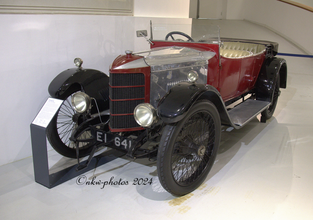
DVLA records show the vehicle as being registered in April 1958. 2392cc petrol engine.
The notice displayed with the vehicle states:
Before the 1920's, cars were very expensive and out of reach for most people. Cars often reflected their owner's tastes, with their own choice of style, materials and colours. Manufacturers soon realised that they could attract new customers for their cars from those who had been impressed by their success in motor racing.
One such model was the Vauxhall C-type 'Prince Henry', developed from Vauxhall's three litre car. It was designed for the Prince Henry trials, a race named after the motoring fanatic Prince Heinrich Hohenzollern of Prussia. Vauxhall put a powerful engine (by contemporary standards) into a special short chassis and created what was Britain's first proper sports car.
The model combined the crafted coachwork of an Edwardian car with much better performance than the average touring model. It was completed by a distinctive pointed nose and Vauxhall's trademark fluted bonnet and radiator. It appealed tot he rich gentleman racer, a market which Vauxhall cultivated at the time. The 'Prince henry' was capable of speeds up to 75mph. Vauxhall scored many victories in trials and hill climbs with the car, including the gruelling Swedish Winter Trial of 1912. This is the earliest of only nine surviving 'Prince Henry' models.
Engine: 4cyl 3053cc. Top speed: 75mph (121km?h). Power: 75bhp. Coachwork: Sports tourer. Price new: £485 (Chassis only). Registration mark: EI 641.
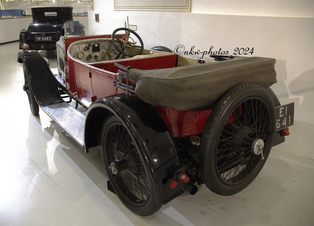
DVLA records show the vehicle as being registered in April 1958. 2392cc petrol engine.
The notice displayed with the vehicle states:
Before the 1920's, cars were very expensive and out of reach for most people. Cars often reflected their owner's tastes, with their own choice of style, materials and colours. Manufacturers soon realised that they could attract new customers for their cars from those who had been impressed by their success in motor racing.
One such model was the Vauxhall C-type 'Prince Henry', developed from Vauxhall's three litre car. It was designed for the Prince Henry trials, a race named after the motoring fanatic Prince Heinrich Hohenzollern of Prussia. Vauxhall put a powerful engine (by contemporary standards) into a special short chassis and created what was Britain's first proper sports car.
The model combined the crafted coachwork of an Edwardian car with much better performance than the average touring model. It was completed by a distinctive pointed nose and Vauxhall's trademark fluted bonnet and radiator. It appealed tot he rich gentleman racer, a market which Vauxhall cultivated at the time. The 'Prince henry' was capable of speeds up to 75mph. Vauxhall scored many victories in trials and hill climbs with the car, including the gruelling Swedish Winter Trial of 1912. This is the earliest of only nine surviving 'Prince Henry' models.
Engine: 4cyl 3053cc. Top speed: 75mph (121km?h). Power: 75bhp. Coachwork: Sports tourer. Price new: £485 (Chassis only). Registration mark: EI 641.

DVLA records show the vehicle as being registered on 1st July 1921.
3969cc petrol engine.
The notice displayed with the vehicle states:
During the First World War Vauxhall supplied over 1,500 D-Type Staff Cars for military use. These cars went to the Western Front, East Africa, Russia and Palestine.
Based on the Vauxhall A-Type, the Staff Car played a vital role in the conflict, able to deal with poor road conditions and still perform, whilst also being relatively quiet and reliable. D-Types in service were known to carry high-peed mail dispatches, as well as senior officers, and even King George himself!
At the time Vauxhall used the slogan "the finest car in active service". The number on the side, IC-0721, is the military number for the vehicle. There are only two known D-Types that have survived since 1918. The Staff Car was also the first vehicle to cross the Rhine following the Armistice in 1918.
This particular vehicle was saved from a scrapyard in 1946 and, following its restoration, it appeared in the film War Horse alongside the Vauxhall Heritage Collection's 'Prince Henry'.
Engine: 4cyl 3969cc. Top speed: 65mph (104km/h). Power: 60bhp. Coachwork: Army Tourer. Price new: £1,600. Registration mark: HM 2157.

DVLA records show the vehicle as being registered on 1st July 1921.
3969cc petrol engine.
The notice displayed with the vehicle states:
During the First World War Vauxhall supplied over 1,500 D-Type Staff Cars for military use. These cars went to the Western Front, East Africa, Russia and Palestine.
Based on the Vauxhall A-Type, the Staff Car played a vital role in the conflict, able to deal with poor road conditions and still perform, whilst also being relatively quiet and reliable. D-Types in service were known to carry high-peed mail dispatches, as well as senior officers, and even King George himself!
At the time Vauxhall used the slogan "the finest car in active service". The number on the side, IC-0721, is the military number for the vehicle. There are only two known D-Types that have survived since 1918. The Staff Car was also the first vehicle to cross the Rhine following the Armistice in 1918.
This particular vehicle was saved from a scrapyard in 1946 and, following its restoration, it appeared in the film War Horse alongside the Vauxhall Heritage Collection's 'Prince Henry'.
Engine: 4cyl 3969cc. Top speed: 65mph (104km/h). Power: 60bhp. Coachwork: Army Tourer. Price new: £1,600. Registration mark: HM 2157.

DVLA records show the vehicle as being registered on 1st July 1921.
3969cc petrol engine.
The notice displayed with the vehicle states:
During the First World War Vauxhall supplied over 1,500 D-Type Staff Cars for military use. These cars went to the Western Front, East Africa, Russia and Palestine.
Based on the Vauxhall A-Type, the Staff Car played a vital role in the conflict, able to deal with poor road conditions and still perform, whilst also being relatively quiet and reliable. D-Types in service were known to carry high-peed mail dispatches, as well as senior officers, and even King George himself!
At the time Vauxhall used the slogan "the finest car in active service". The number on the side, IC-0721, is the military number for the vehicle. There are only two known D-Types that have survived since 1918. The Staff Car was also the first vehicle to cross the Rhine following the Armistice in 1918.
This particular vehicle was saved from a scrapyard in 1946 and, following its restoration, it appeared in the film War Horse alongside the Vauxhall Heritage Collection's 'Prince Henry'.
Engine: 4cyl 3969cc. Top speed: 65mph (104km/h). Power: 60bhp. Coachwork: Army Tourer. Price new: £1,600. Registration mark: HM 2157.
1920
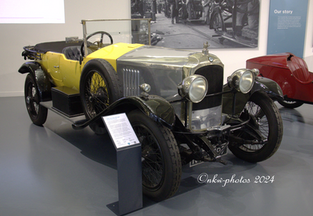
Vehicle first registered on 4th March 1926.
4224cc petrol engine.
The notice displayed with the vehicle states:
Velox Tourer
Following on from Britain's first sports car, Vauxhall's C-Type Prince Henry, the 30-98 was introduced in 1913. It became the marques best known sporting model, with more than 600 produced over 14 years.
Originally offered with a side valve 4 1/2 litre engine, in 1922 this was upgraded to a 4 1/4 litre overhead valve unit, giving 112bhp. In 1923, four wheel brakes became standard and, by the time the 30/98 went of production in 1927, hydraulic braking was included.
A variety of body styles was available, as was a chassis-only option, giving the customer freedom to have the coachwork constructed to his or her own taste. The most dramatic was the racy Wensum, with no doors, no hood and flared wings but costing £150 more than the regular tourer with all its comforts!
In pared-down form, with a high ratio rear axle, the 30/98 had a factory quoted top speed of 100mph (161 km/h). This made it the fastest catalogued production car in the UK at the time.
Engine: 4cyl. 4224cc. Top speed: 85mph (137km/h). Power: 112bhp. Coachwork: Sports Tourer. Price new: £1,200. Registration mark: NT 7797.

Vehicle first registered on 4th March 1926.
4224cc petrol engine.
The notice displayed with the vehicle states:
Velox Tourer
Following on from Britain's first sports car, Vauxhall's C-Type Prince Henry, the 30-98 was introduced in 1913. It became the marques best known sporting model, with more than 600 produced over 14 years.
Originally offered with a side valve 4 1/2 litre engine, in 1922 this was upgraded to a 4 1/4 litre overhead valve unit, giving 112bhp. In 1923, four wheel brakes became standard and, by the time the 30/98 went of production in 1927, hydraulic braking was included.
A variety of body styles was available, as was a chassis-only option, giving the customer freedom to have the coachwork constructed to his or her own taste. The most dramatic was the racy Wensum, with no doors, no hood and flared wings but costing £150 more than the regular tourer with all its comforts!
In pared-down form, with a high ratio rear axle, the 30/98 had a factory quoted top speed of 100mph (161 km/h). This made it the fastest catalogued production car in the UK at the time.
Engine: 4cyl. 4224cc. Top speed: 85mph (137km/h). Power: 112bhp. Coachwork: Sports Tourer. Price new: £1,200. Registration mark: NT 7797.
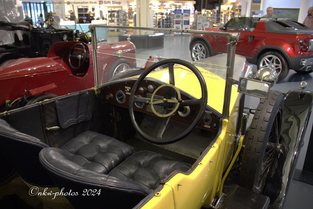
Vehicle first registered on 4th March 1926.
4224cc petrol engine.
The notice displayed with the vehicle states:
Velox Tourer
Following on from Britain's first sports car, Vauxhall's C-Type Prince Henry, the 30-98 was introduced in 1913. It became the marques best known sporting model, with more than 600 produced over 14 years.
Originally offered with a side valve 4 1/2 litre engine, in 1922 this was upgraded to a 4 1/4 litre overhead valve unit, giving 112bhp. In 1923, four wheel brakes became standard and, by the time the 30/98 went of production in 1927, hydraulic braking was included.
A variety of body styles was available, as was a chassis-only option, giving the customer freedom to have the coachwork constructed to his or her own taste. The most dramatic was the racy Wensum, with no doors, no hood and flared wings but costing £150 more than the regular tourer with all its comforts!
In pared-down form, with a high ratio rear axle, the 30/98 had a factory quoted top speed of 100mph (161 km/h). This made it the fastest catalogued production car in the UK at the time.
Engine: 4cyl. 4224cc. Top speed: 85mph (137km/h). Power: 112bhp. Coachwork: Sports Tourer. Price new: £1,200. Registration mark: NT 7797.
1930

Vehicle first registered on 1st December 1930.
2916cc petrol engine.
The notice displayed with the vehicle states:
The T-type is an example of the Vauxhall 20/30 with a convertible body (the Melton golfer's coupe) which was supplied by the Grosvenor Carriage Company of London.
First known as the R-type, the car was revised from its original format between 1927 and 1930 and the new version, the 20-60 T-type, was shown in 1929 at the Olympia Motor Show. The model was offered in two wheelbase sizes, the 'T' at 10ft 3ins or 'TL' 10ft 10ins.
More streamlined than the original R-type, the new model featured all chrome brightwork on the exterior and long-range headlights with dip-switch control in the centre of the steering wheel. Production of this vehicle did not last long as it was relatively expensive, particularly during a period of time that saw dramatic economic downturn in the form of the Great Depression.
Engine: 6cyl. 2916cc. Top speed: 70mph (112km/h). Power: 60bhp. Coachwork: Coupe. Price new: £585. Registration mark: VR 5883.
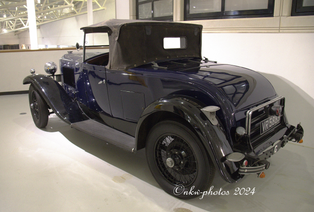
Vehicle first registered on 1st December 1930.
2916cc petrol engine.
The notice displayed with the vehicle states:
The T-type is an example of the Vauxhall 20/30 with a convertible body (the Melton golfer's coupe) which was supplied by the Grosvenor Carriage Company of London.
First known as the R-type, the car was revised from its original format between 1927 and 1930 and the new version, the 20-60 T-type, was shown in 1929 at the Olympia Motor Show. The model was offered in two wheelbase sizes, the 'T' at 10ft 3ins or 'TL' 10ft 10ins.
More streamlined than the original R-type, the new model featured all chrome brightwork on the exterior and long-range headlights with dip-switch control in the centre of the steering wheel. Production of this vehicle did not last long as it was relatively expensive, particularly during a period of time that saw dramatic economic downturn in the form of the Great Depression.
Engine: 6cyl. 2916cc. Top speed: 70mph (112km/h). Power: 60bhp. Coachwork: Coupe. Price new: £585. Registration mark: VR 5883.

Vehicle first registered on 1st June, 1934.
1701cc petrol engine.

Vehicle first registered on 1st June, 1934.
1701cc petrol engine.
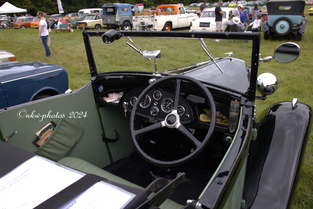
Vehicle first registered on 1st June, 1934.
1701cc petrol engine.
1940
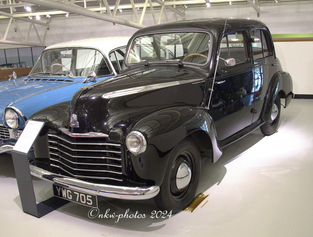
Vehicle first registered on 1st August 1949.
1442cc petrol engine.
The notice displayed with the vehicle states:
One of the first post-way cars that was produced by Vauxhall, the L-type Wyvern was first introduced in November 1948. Designed for export to bolster the British economy, the model was American influenced, with a style inspired by the Chevrolet Fleetline.
Initially only available in four colours, L-type model did not change much from its pre-was counterpart, but with material shortages and fuel rationing in place, there was not much to compete with it.
There were 55,000 Vauxhall Wyverns produced between 1948 and 1951 with very little changes being made. After their first three-year production run the L-type was redesigned to be the new E-type Wyvern, with changes made to comply with new regulations on lights for export markets.
Engine: 4cyl. 1442cc. Top speed: 60mph (96km/h). Power: 35bhp. Coachwork: four-door saloon. Price new: £447. Registration mark: YWG 705.
1950

Vehicle first registered on 1st July 1959.
2262cc petrol engine.
The notice displayed with the vehicle states:
The PA version of the Velox and its more upmarket sister, the Cresta, were launched in 1957 at the London Motor Show as successor to the Vauxhall Fourteen. It was a radical departure from its predecessors in that it mirrored North American styling trends with fins, acres of chrome and wrap-around glass.
The Velox was naturally the cheaper of the pair with painted mouldings in stead of steel or chrome, and the wheels had plain hubcaps instead of full-size shiny discs. The Cresta had a flashy bonnet mascot but the Velox made do with a plastic affair instead.
A three-speed, all-synchromesh, manual gearbox with a column gearchange (naturally!) was standard equipment on the Velox but an overdrive unit, or the GM "Hydramatic" automatic transmission could be had as an option.
The PA was replaced in 1962 by the PB - the last Velox. The PB was a bigger car but much more restrained stylistically than the model on display here, having lost the fins and excess chrome, and it signalled the end of the transatlantic era for Vauxhall.
Engine: 6cyl. 2262cc. Top speed: 90mph (145km/h). Power: 82bhp. Coachwork: four-door saloon. Price new: £983. Registration mark: TWV 849.

Vehicle first registered on 1st July 1959.
2262cc petrol engine.
The notice displayed with the vehicle states:
The PA version of the Velox and its more upmarket sister, the Cresta, were launched in 1957 at the London Motor Show as successor to the Vauxhall Fourteen. It was a radical departure from its predecessors in that it mirrored North American styling trends with fins, acres of chrome and wrap-around glass.
The Velox was naturally the cheaper of the pair with painted mouldings in stead of steel or chrome, and the wheels had plain hubcaps instead of full-size shiny discs. The Cresta had a flashy bonnet mascot but the Velox made do with a plastic affair instead.
A three-speed, all-synchromesh, manual gearbox with a column gearchange (naturally!) was standard equipment on the Velox but an overdrive unit, or the GM "Hydramatic" automatic transmission could be had as an option.
The PA was replaced in 1962 by the PB - the last Velox. The PB was a bigger car but much more restrained stylistically than the model on display here, having lost the fins and excess chrome, and it signalled the end of the transatlantic era for Vauxhall.
Engine: 6cyl. 2262cc. Top speed: 90mph (145km/h). Power: 82bhp. Coachwork: four-door saloon. Price new: £983. Registration mark: TWV 849.
1960
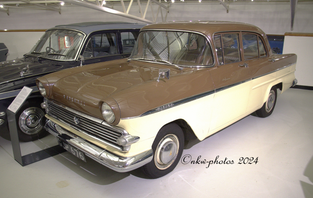
DVLA records show the vehicle as being registered on 1st September 1980.
1600cc petrol engine.
The notice displayed with the vehicle states:
The Victor was Vauxhall's entry into a model range which lasted into the late 'Seventies'. Launched in 1957, and having a good sized luggage compartment, it proved a popular alternative for the family to the less exciting alternatives from BMC, Rootes and Standard-Triumph. The then class-leading Ford Consul now had a more serious competitor.
The F-type had relegated the traditional Vauxhall bonnet flutes to the sides of the body and both manual and automatic versions were available. After just 15 months of production the 100,000th Victor was produced.
The F-type had a few problems: the wrap-around windscreen pillars would take one's kneecaps off during boarding and alighting, and the exhaust tailpipe whilst neatly emerging through the rear bumper quickly blued the chrome. Most of the irritations and problems however were sorted out with the Series 2 facelift a couple of years later.
The example on display is one of the last F-types produced and the more cleanly styled and more solidly built FB Victor replaced the model in 1961.
Engine: 4cyl. 1508cc. Top speed: 75mph (120km/h). Power: 55bhp. Coachwork: four-door saloon. Price new: £848. Registration mark: GJP 676.

DVLA records show the vehicle as being registered on 1st September 1980.
1600cc petrol engine.
The notice displayed with the vehicle states:
The Victor was Vauxhall's entry into a model range which lasted into the late 'Seventies'. Launched in 1957, and having a good sized luggage compartment, it proved a popular alternative for the family to the less exciting alternatives from BMC, Rootes and Standard-Triumph. The then class-leading Ford Consul now had a more serious competitor.
The F-type had relegated the traditional Vauxhall bonnet flutes to the sides of the body and both manual and automatic versions were available. After just 15 months of production the 100,000th Victor was produced.
The F-type had a few problems: the wrap-around windscreen pillars would take one's kneecaps off during boarding and alighting, and the exhaust tailpipe whilst neatly emerging through the rear bumper quickly blued the chrome. Most of the irritations and problems however were sorted out with the Series 2 facelift a couple of years later.
The example on display is one of the last F-types produced and the more cleanly styled and more solidly built FB Victor replaced the model in 1961.
Engine: 4cyl. 1508cc. Top speed: 75mph (120km/h). Power: 55bhp. Coachwork: four-door saloon. Price new: £848. Registration mark: GJP 676.

DVLA records show the vehicle as being registered on 1st September 1980.
1600cc petrol engine.
The notice displayed with the vehicle states:
The Victor was Vauxhall's entry into a model range which lasted into the late 'Seventies'. Launched in 1957, and having a good sized luggage compartment, it proved a popular alternative for the family to the less exciting alternatives from BMC, Rootes and Standard-Triumph. The then class-leading Ford Consul now had a more serious competitor.
The F-type had relegated the traditional Vauxhall bonnet flutes to the sides of the body and both manual and automatic versions were available. After just 15 months of production the 100,000th Victor was produced.
The F-type had a few problems: the wrap-around windscreen pillars would take one's kneecaps off during boarding and alighting, and the exhaust tailpipe whilst neatly emerging through the rear bumper quickly blued the chrome. Most of the irritations and problems however were sorted out with the Series 2 facelift a couple of years later.
The example on display is one of the last F-types produced and the more cleanly styled and more solidly built FB Victor replaced the model in 1961.
Engine: 4cyl. 1508cc. Top speed: 75mph (120km/h). Power: 55bhp. Coachwork: four-door saloon. Price new: £848. Registration mark: GJP 676.
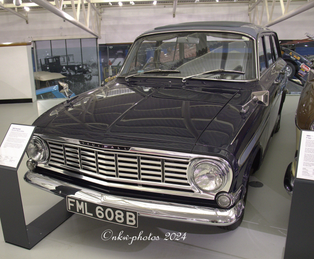
Vehicle first registered on 1st May 1964.
1594cc petrol engine.
The notice displayed with the vehicle states:
September 1961 saw the launch of the second-generation Victor, the FB. More restrained than its predecessor but having a crisp and well-proportioned design, FB was available in both saloon and estate styles plus base, De Luxe and Super trim levels coupled with no less than 14 body colours.
A three-speed column gearchange and bench seats were standard on the FB and harked back to the transatlantic feel but most customers opted for the more comfortable bucket seats and the floor-mounted, four speed, all-synchromesh transmission.
The example on display is one of the last FB models produced with the Victor "101" FC being introduced in 1964. The FC was the first Vauxhall to use curved side window glass and allegedly had 101 improvements over its predecessor - hence the model designation.
Engine: 4cyl. 1594cc. Top speed: 76mph (122km/h). Power: 59bhp. Coachwork: estate. Price new: £861. Registration mark: FML 608B.
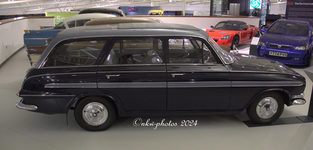
Vehicle first registered on 1st May 1964.
1594cc petrol engine.
The notice displayed with the vehicle states:
September 1961 saw the launch of the second-generation Victor, the FB. More restrained than its predecessor but having a crisp and well-proportioned design, FB was available in both saloon and estate styles plus base, De Luxe and Super trim levels coupled with no less than 14 body colours.
A three-speed column gearchange and bench seats were standard on the FB and harked back to the transatlantic feel but most customers opted for the more comfortable bucket seats and the floor-mounted, four speed, all-synchromesh transmission.
The example on display is one of the last FB models produced with the Victor "101" FC being introduced in 1964. The FC was the first Vauxhall to use curved side window glass and allegedly had 101 improvements over its predecessor - hence the model designation.
Engine: 4cyl. 1594cc. Top speed: 76mph (122km/h). Power: 59bhp. Coachwork: estate. Price new: £861. Registration mark: FML 608B.
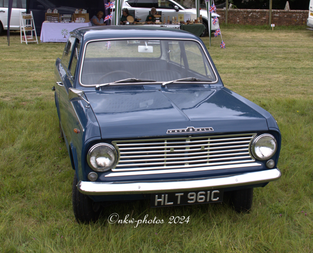
Vehicle first registered on 17th September 1965.
1057cc petrol engine.

Vehicle first registered on 17th September 1965.
1057cc petrol engine.
1970

Vehicle first registered on 11th February 1970.
1975cc petrol engine.
The notice displayed with the vehicle states:
The Viva was a small family car produced by Vauxhall in a series of three versions between 1963 and 1979, designated the HA, HB and HC. The Viva was conventional in configuration: a three-box saloon with a reasonable boot, front engine and rear wheel drive. The model's direct competitors included the Ford Anglia and the Triumph Herald.
The HB appeared in 1966. In comparison to the HA it had gained coil springs for the suspension, and an increased engine size (from the 1057cc of the HA to 1159cc).
Following the performance saloon theme led by Ford with their Lotus-developed version of the Cortina, and BMC with the Mini Cooper, Vauxhall followed suit with tuned versions of the Viva HB. Following the initial "Jack Brabham" version with a tuned, 68bhp edition of the standard engine, the much more capable "GT" was produced.
The Viva GT had substantially different engine, running gear and interior to the standard HB model. It was distinguished by having a black bonnet with twin louvres and go-faster side stripes.
Engine:4cyl. 1975cc. Top speed: 100mph (161km/h). Power: 112bhp. Coachwork: two-door saloon. Price new: £860. Registration mark: YXD 674H.

Vehicle first registered on 11th February 1970.
1975cc petrol engine.
The notice displayed with the vehicle states:
The Viva was a small family car produced by Vauxhall in a series of three versions between 1963 and 1979, designated the HA, HB and HC. The Viva was conventional in configuration: a three-box saloon with a reasonable boot, front engine and rear wheel drive. The model's direct competitors included the Ford Anglia and the Triumph Herald.
The HB appeared in 1966. In comparison to the HA it had gained coil springs for the suspension, and an increased engine size (from the 1057cc of the HA to 1159cc).
Following the performance saloon theme led by Ford with their Lotus-developed version of the Cortina, and BMC with the Mini Cooper, Vauxhall followed suit with tuned versions of the Viva HB. Following the initial "Jack Brabham" version with a tuned, 68bhp edition of the standard engine, the much more capable "GT" was produced.
The Viva GT had substantially different engine, running gear and interior to the standard HB model. It was distinguished by having a black bonnet with twin louvres and go-faster side stripes.
Engine:4cyl. 1975cc. Top speed: 100mph (161km/h). Power: 112bhp. Coachwork: two-door saloon. Price new: £860. Registration mark: YXD 674H.

Vehicle not registered. No engine fitted.
The notice displayed with the vehicle states:
The Styling Research Vehicle (SRV) created by the design team of Wayne Cherry and Chris Field debuted at the London Motor Show in 1970, but was never intended to be a production vehicle.
Despite being based on contemporary Le Mans racers, the Vauxhall SRV could fit four adults inside. To do this it has pedals and a steering column that adjust to fit the driver, allowing the front seats to keep a fixed position. With no handles, the upward-opening rear doors are largely disguised.
Technology at the time allowed the SRV to have electrically adjusted suspension and two petrol tanks also meant that fuel could be redistributed for better balance. An instrument panel set into the driver-side door measured air pressure to indicate aerodynamic efficiency, and an aerofoil at the front allowed for downforce adjustment.
The car was designed to be powered by a transversely mounted DOHC 2.3 litre slant-four engine with fuel injection and twin turbochargers. The engine of the concept car is mocked-up from fibreglass, aluminium and wood.

Vehicle not registered. No engine fitted.
The notice displayed with the vehicle states:
The Styling Research Vehicle (SRV) created by the design team of Wayne Cherry and Chris Field debuted at the London Motor Show in 1970, but was never intended to be a production vehicle.
Despite being based on contemporary Le Mans racers, the Vauxhall SRV could fit four adults inside. To do this it has pedals and a steering column that adjust to fit the driver, allowing the front seats to keep a fixed position. With no handles, the upward-opening rear doors are largely disguised.
Technology at the time allowed the SRV to have electrically adjusted suspension and two petrol tanks also meant that fuel could be redistributed for better balance. An instrument panel set into the driver-side door measured air pressure to indicate aerodynamic efficiency, and an aerofoil at the front allowed for downforce adjustment.
The car was designed to be powered by a transversely mounted DOHC 2.3 litre slant-four engine with fuel injection and twin turbochargers. The engine of the concept car is mocked-up from fibreglass, aluminium and wood.
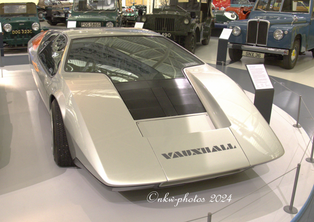
Vehicle not registered. No engine fitted.
The notice displayed with the vehicle states:
The Styling Research Vehicle (SRV) created by the design team of Wayne Cherry and Chris Field debuted at the London Motor Show in 1970, but was never intended to be a production vehicle.
Despite being based on contemporary Le Mans racers, the Vauxhall SRV could fit four adults inside. To do this it has pedals and a steering column that adjust to fit the driver, allowing the front seats to keep a fixed position. With no handles, the upward-opening rear doors are largely disguised.
Technology at the time allowed the SRV to have electrically adjusted suspension and two petrol tanks also meant that fuel could be redistributed for better balance. An instrument panel set into the driver-side door measured air pressure to indicate aerodynamic efficiency, and an aerofoil at the front allowed for downforce adjustment.
The car was designed to be powered by a transversely mounted DOHC 2.3 litre slant-four engine with fuel injection and twin turbochargers. The engine of the concept car is mocked-up from fibreglass, aluminium and wood.
1990

Vehicle first registered on 22nd January 1993.
3615cc petrol engine.
The notice displayed with the vehicle states:
The Vauxhall Lotus Carlton was based on the Carlton Gsi 24v and launched in autumn 1990. Complete Gsi models were shipped from Ruesselsheim to the Lotus factory in Hethel, Norfolk, where they were stripped and heavily modified to accept the necessary running gear, and model-specific interior and exterior trim.
Lotus Engineering developed the Carlton's MacPherson strut front and multi-link rear suspension - lowering it and stiffening it. With the addition of a Garrett turbocharger and various other tweaks the engine was producing 377bhp which pushed the car to 60mph in just over 5 seconds and on to 176mph.
The result of the collaboration between GM and Lotus was one of the fastest big luxury saloons - it was dubbed the then fastest four-seater saloon car in the world. The balance of performance and on-road behaviour also made the Lotus Carlton popular with the police for use as a (very!) high speed, albeit expensive, pursuit vehicle.
In its four-year production span, only 950 Lotus Carltons were built and the example on display in no. 820, an ex-press fleet car and one of just 286 UK versions produced.
Engine: 6cyl. 3615cc. Top speed: 176mph (283km?h). Power: 377bhp. Coachwork: four-door saloon. Price new: £48,000. Registration mark: K948 XGS.
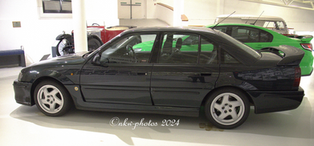
Vehicle first registered on 22nd January 1993.
3615cc petrol engine.
The notice displayed with the vehicle states:
The Vauxhall Lotus Carlton was based on the Carlton Gsi 24v and launched in autumn 1990. Complete Gsi models were shipped from Ruesselsheim to the Lotus factory in Hethel, Norfolk, where they were stripped and heavily modified to accept the necessary running gear, and model-specific interior and exterior trim.
Lotus Engineering developed the Carlton's MacPherson strut front and multi-link rear suspension - lowering it and stiffening it. With the addition of a Garrett turbocharger and various other tweaks the engine was producing 377bhp which pushed the car to 60mph in just over 5 seconds and on to 176mph.
The result of the collaboration between GM and Lotus was one of the fastest big luxury saloons - it was dubbed the then fastest four-seater saloon car in the world. The balance of performance and on-road behaviour also made the Lotus Carlton popular with the police for use as a (very!) high speed, albeit expensive, pursuit vehicle.
In its four-year production span, only 950 Lotus Carltons were built and the example on display in no. 820, an ex-press fleet car and one of just 286 UK versions produced.
Engine: 6cyl. 3615cc. Top speed: 176mph (283km?h). Power: 377bhp. Coachwork: four-door saloon. Price new: £48,000. Registration mark: K948 XGS.

Vehicle first registered on 22nd January 1993.
3615cc petrol engine.
The notice displayed with the vehicle states:
The Vauxhall Lotus Carlton was based on the Carlton Gsi 24v and launched in autumn 1990. Complete Gsi models were shipped from Ruesselsheim to the Lotus factory in Hethel, Norfolk, where they were stripped and heavily modified to accept the necessary running gear, and model-specific interior and exterior trim.
Lotus Engineering developed the Carlton's MacPherson strut front and multi-link rear suspension - lowering it and stiffening it. With the addition of a Garrett turbocharger and various other tweaks the engine was producing 377bhp which pushed the car to 60mph in just over 5 seconds and on to 176mph.
The result of the collaboration between GM and Lotus was one of the fastest big luxury saloons - it was dubbed the then fastest four-seater saloon car in the world. The balance of performance and on-road behaviour also made the Lotus Carlton popular with the police for use as a (very!) high speed, albeit expensive, pursuit vehicle.
In its four-year production span, only 950 Lotus Carltons were built and the example on display in no. 820, an ex-press fleet car and one of just 286 UK versions produced.
Engine: 6cyl. 3615cc. Top speed: 176mph (283km?h). Power: 377bhp. Coachwork: four-door saloon. Price new: £48,000. Registration mark: K948 XGS.









